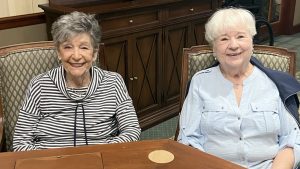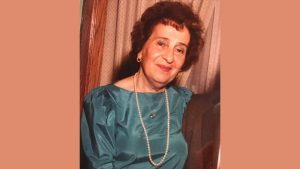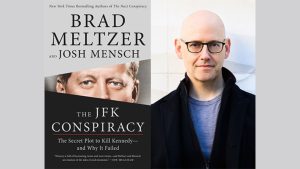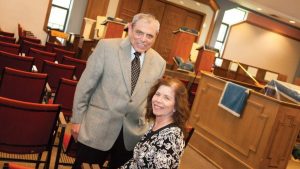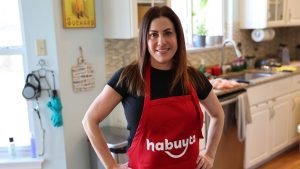With Moishe House success, groups see new model for engaging 20-somethings
Published June 22, 2011
SAN FRANCISCO — Ben Levinson, 28, was born and raised in St. Louis. He returned after college to find most of the Jewish friends he grew up with had moved away.
That’s not unusual: St. Louis is one of many U.S. cities with shrinking Jewish populations and, as in other cities, the young are the first to leave.
“There are no hard figures, but there’s a tendency to lose young Jews from St. Louis,” said Meg Crane, senior writer at the local Jewish federation.
The last Jewish population study of the city, in the mid-1990s, counted 54,000 Jews.
Levinson thought about leaving, too, he told JTA.
“Then I started to get involved with Moishe House,” he said. “That helped keep me here.”
Moishe House is a national organization that provides rent subsidies and a programming budget for groups of three to five Jews in their 20s who agree to live in downtown neighborhoods with large numbers of 20-something Jews. They must turn their home into a hub of regularly scheduled Jewish activities for their peers.
From one house in San Francisco in 2006, the network has grown to 36 houses in 14 countries — 22 of them in the United States. More than 40,000 young Jews each year take part in Moishe House events, which range from Shabbat meals and Jewish learning to service projects and social get-togethers.
“We’re getting a lot of applications,” said David Cygielman, 29, the organization’s founder and CEO.
The original goal was to help young Jews build their own community and find meaning in their Judaism. But as the houses multiplied, the peer-led houses of rollicking Jewish energy became seen as a great way for foundations and Jewish federations to engage the next generation of Jews in Jewish communal life, especially in cities where young Jews are moving away.
The foundations and federations piled on. The first few Moishe Houses were supported by the Forest Family Foundation of Santa Barbara, Calif. Then the Charles and Lynn Schusterman Family Foundation joined the act, followed by the Jim Joseph Foundation.
Today, foundations and federations are providing the bulk of funding for the houses in their own cities; Moishe Houses will open only in cities where there is local support.
“They’re engaging literally hundreds of young adults in ways we never could have done,” said Michael Hoffman, a senior vice president at Baltimore’s Jewish Community Federation, which provides $35,000 annually for the local Moishe House. “We could have got the JCC to hire three full-time outreach workers for three times the money. This is incredibly cost efficient.”
The Baltimore federation is now thinking about starting two new Moishe Houses, including one for young families.
Charlene Seidle is a senior vice president at the federation in San Diego, where the Leichtag Family Foundation supports the year-old Moishe House. Seidle called the house “a model that works.”
“We’ve been amazed by the breadth of events — from Shabbat dinners to blood drives to environmental social action events — and the turnout, all for such a low cost,” he said. “Moishe House really leverages the value of peer-to-peer outreach, networking and relationships.”
By creating vibrant centers of Jewish life, Moishe House residents say they are also encouraging young Jews to stay in cities with dwindling Jewish populations — something that can strengthen the entire community.
“It’s definitely happening,” Cygielman said. “We’re seeing it even in places like the former Soviet Union, where we have houses in Gomel, Ukraine, and Saratov, Russia. “We’re getting a lot of applications in those places.”
Cygielman said a recent survey found that about half the people who come to a Moishe House event are interested in living in one.
Laura Taishoff, 23, lives in the Moishe House in New Orleans, a city where many of the young Jews are transplants from elsewhere. She says the house provides a warm space for them to celebrate Jewish holidays when they can’t get home.
“The synagogues take care of the High Holidays, but we do Passover seders, Purim and a lot of Shabbat dinners,” she said. “There is a real need for this. It’s not that young Jews don’t want to connect religiously, it’s that they need a space to do it.”
In Chicago, 27-year-old Franklin Drob lives in the country’s first Russian-speaking Moishe House, founded two years ago. An internationally known yoga teacher and founder of InsideSmiles, a corporate wellness program, Drob teaches “yoga under the stars” outside on the Moishe House patio.
“People feel healthy, and I can help them get more connected to their Judaism,” he said.
This June, six young Jews opened Detroit’s first Moishe House in a historic downtown neighborhood that is being revitalized. Their goal is to convince other young Jews to follow them back to the city their parents and grandparents abandoned.
Last year, a Jewish population study in Detroit found 67,000 Jews in the city, a drop of 5,000 since 2005.
“One of our biggest problems is we don’t have a centrally located hub for young Jews to hang out and socialize,” said Jordan Wolfe, 28, a Detroit native and one of the house residents. “It needs to be in the city. Our generation yearns for culture and diversity. We’re not about suburban sprawl — that was for our parents’ generation. If we don’t have a vibrant urban core, young Jews won’t stay.”
One of the house’s first project is a baseball fundraiser planned for late August. The money raised will go toward rent subsidies for young Jews who agree to move downtown. They, in turn, must host one or two Jewish events of their own, such as a Shabbat meal.
Open just a few weeks, the Detroit Moishe House already helped persuade four other young Jews to move into the neighborhood.
Adam Finkel, a 24-year-old Detroit native committed to keeping his peers in the city he loves, raised $80,000 to open the house after visiting a Moishe House in San Francisco last fall. Already a seasoned young entrepreneur, Finkel says he didn’t choose the project lightly.
“It has a proven track record,” he said. “It has a concept that works, a brand that resonates, and both a local and a national leadership structure in place.”



